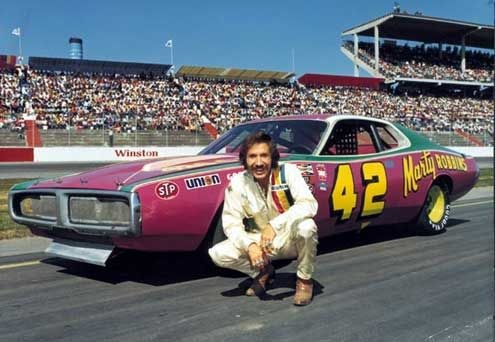#42
Big Iron: How Marty Robbins Became A NASCAR Legend
The number 42 Dodge Charger was running well. Although it had qualified in 9th position with a top speed of only 177 miles per hour, during the race it was clocked as high as 188 miles per hour and its driver, an amateur racer who made his living singing cowboy ballads at the Grand Ole Opry, was really mixing it up with the professional drivers. The Winston 500 was a big deal and, as one of the premier NASCAR races, there as a lot at stake. Talladega was one of those legendary places that captured the imagination and the attention of every race fan in the nation was focused on the event. For older, more experienced drivers a good performance meant job security while for the new guys, like Darrell Waltrip who was making his first ever Sprint Cup start in the race, a good performance could mark a man out from his peers and maybe garner the attention of one of the big teams. Given the expense, the effort, and the experience that it took to even field a car in the race, how was it that a country and western singer in a car paid for mostly out of his own pocket could be running so well? The answer is simple, he was cheating.
















Recent Comments